To me, Kyoto will always be the “temple” city. The first time I visited 10 years ago I was awestruck by the many beautiful temples in the city.
So on my second trip, I made sure to revisit a few old favourites, such as the Golden Pavilion (above), as well as new sights, such as the Kiyomizu Dera Temple.
There’s so much traditional Japanese architecture in Kyoto, I love wandering around and stumbling unexpectedly upon yet another stunning temple or tea house.
On my first visit to the city, my friend and I visited the Silver Pavilion (which oddly enough doesn’t feature any silver) and then followed the Philosopher’s Path, a peaceful 2km canal-side walk that runs from the pavilion to the district of Nanzen-ji.
There were numerous really interesting, quirky boutiques along the way, as well as lots of small temples hidden up in the hills just off the path.
I remember being amazed by how pretty and scenic the walk was, and astonished by all the temples I’d seen – and that day remains one of my favourite travel moments.
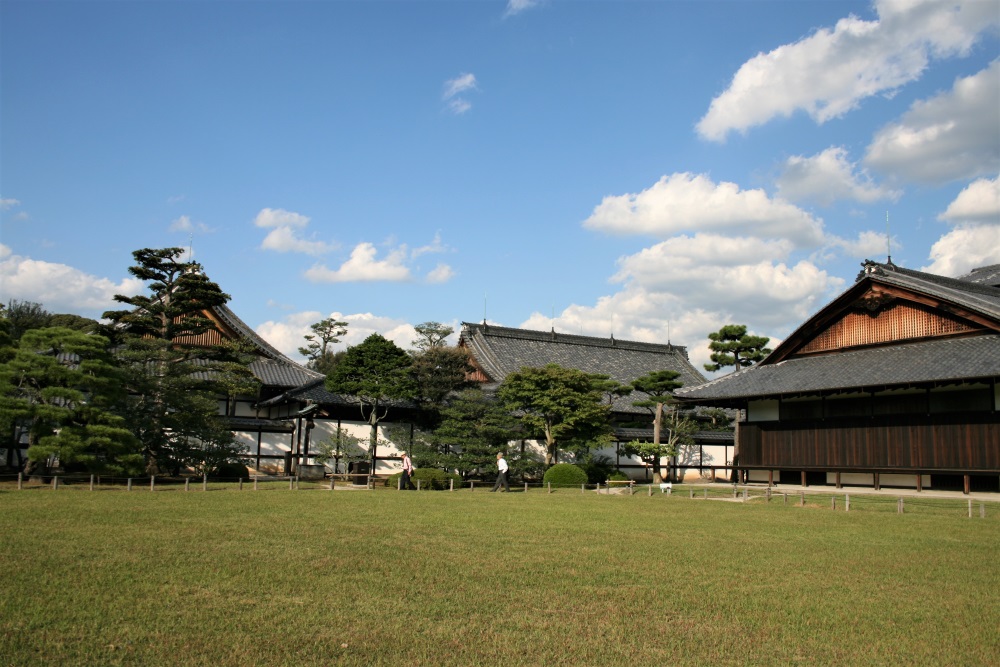
This time around my first stop was Nijo Castle, home to Ninomaru Palace, where the shogun used to stay on his visits to the ancient imperial capital.
On passing under the wonderful Karamon Gate, we headed to the palace just beyond.
Inside we walked around a number of large airy rooms featuring beautiful painted frescoes.
The palace was very elegant, and despite the incredible painted walls, ceilings and sliding doors, had a charming simplicity to it.
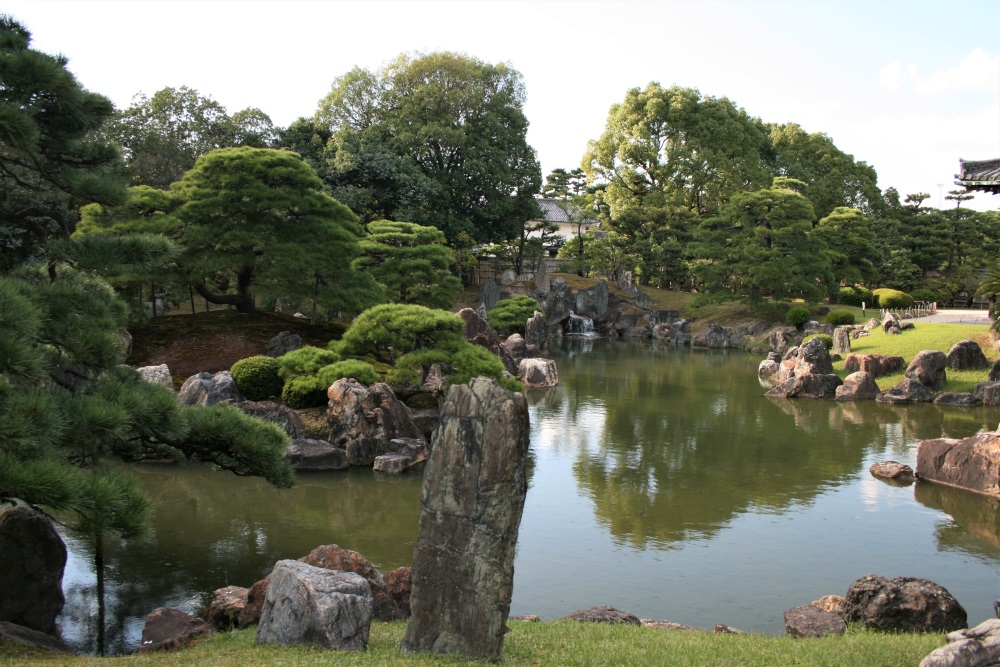
After touring the palace, we ambled around the castle grounds (above), which were just as pretty as the buildings.
The traditional Japanese gardens, with their lovely rock formations and water displays, felt very serene and it was a peaceful place to explore.
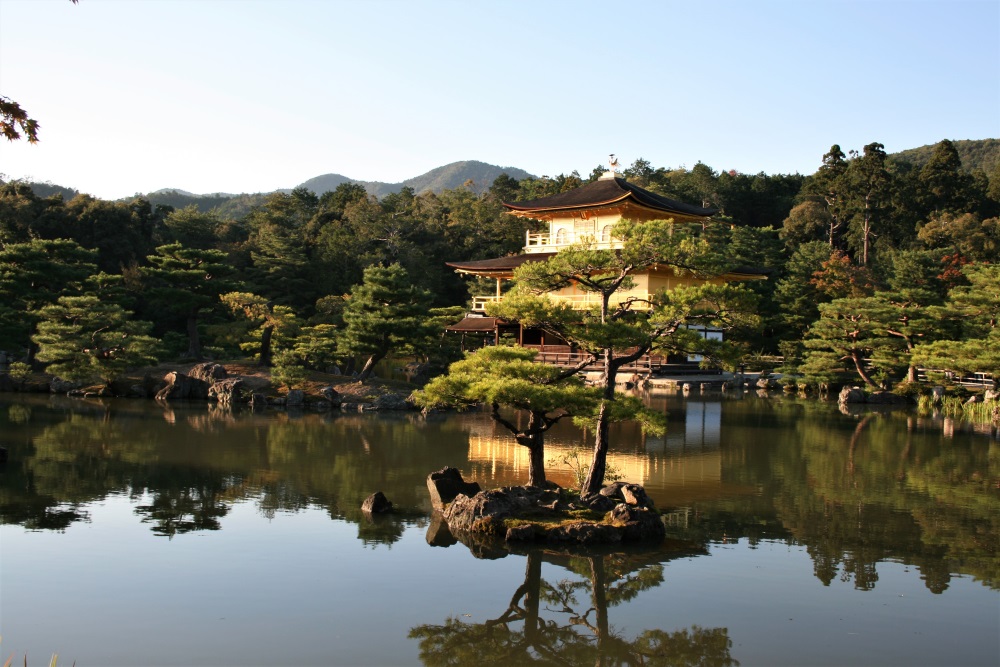
Our next stop was the iconic Golden Pavilion (above). I remember being captivated the first time I laid eyes on the gleaming building, and second time around, it didn’t disappoint.
The pavilion is part of the Rokuon-ji Temple, more commonly known as the Temple of the Golden Pavilion.
The Golden Pavilion, or Kinkaku-ji as it’s known in Japanese, derives its name from the gold foil that adorns its upper two storeys and it’s quite possibly the most beautiful building I’ve ever seen.
The gold is so effective, and set against the backdrop of the lake (the pond of Kyoko-chi), it gleams and shimmers to wondrous effect.
You can’t go inside the Golden Pavilion – you can only look at it from various angles, but it’s sheer splendour makes it a must-see.
Having gazed admiringly at the pavilion, we then explored the rest of the temple complex, enjoying a walk through the wooded park past various shrines and the simple, wooden Sekka-tei Tea House.
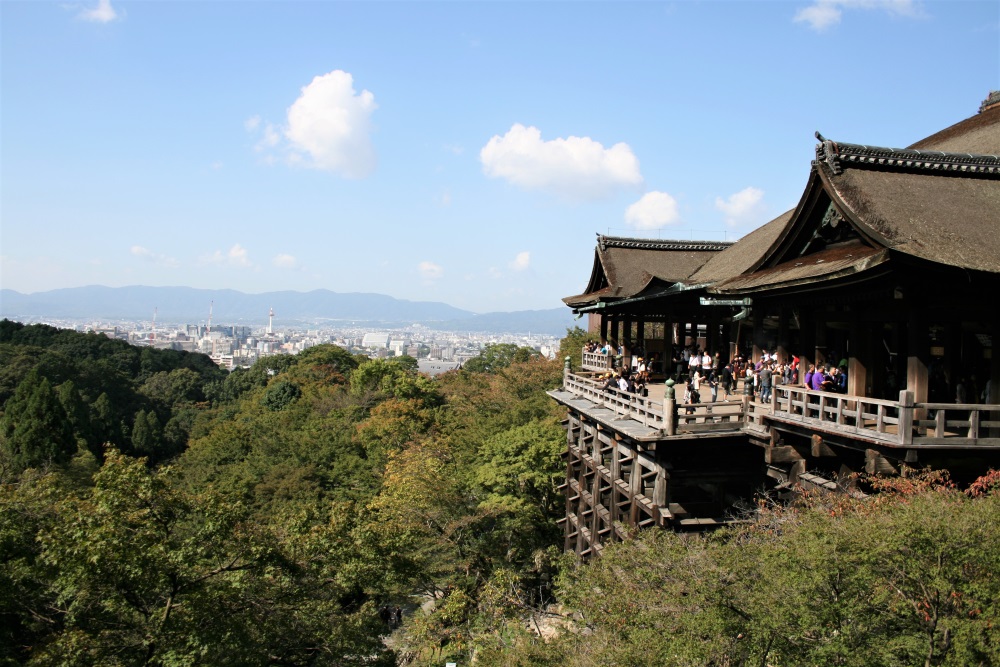
The next day we rose early and made our way to the Kiyomizu Dera Temple, high up in the tree-lined mountains that look out over the city.
The Buddhist temple, which was founded in the 8th century, was rebuilt in the 17th century, and it’s dominated by an enormous wooden hall and viewing platform (above).
There were lots of steep hills and steps to walk up and down as the temple complex was so high up, and I found this incredibly difficult as my knee was playing up and it was very painful.
But the scenery and the views over the city were spectacular – and almost made the pain worth it.
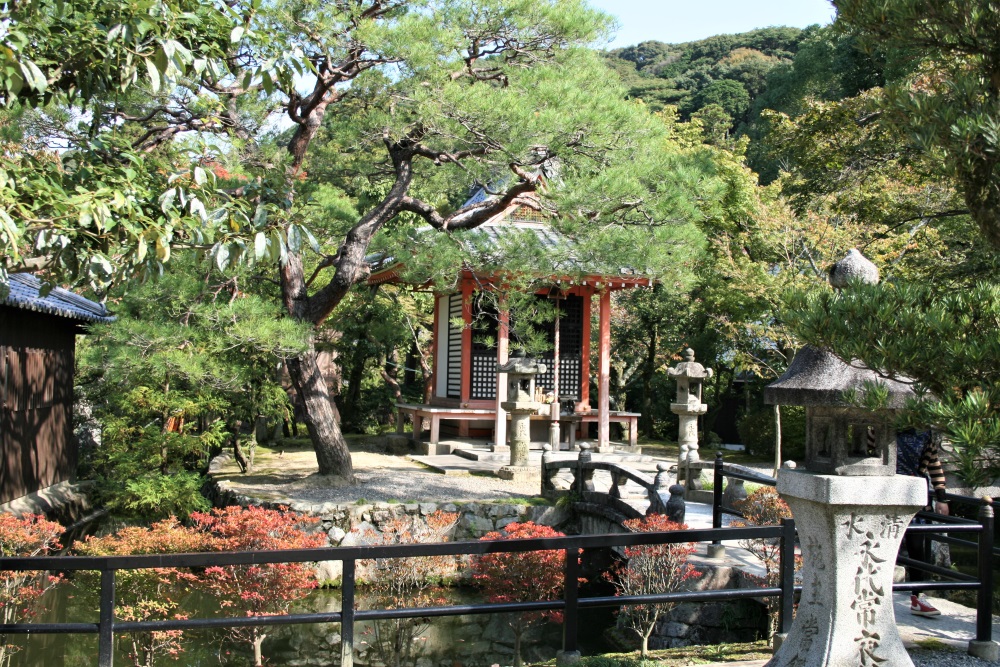
Following our trip to the temple, we had a quick tour of Gion, Kyoto’s famed Geisha district – although I didn’t see any Geishas – before heading back to the train station to get the bullet train to Tokyo.
I love Kyoto. From the temples to the tea houses, the old Geisha district and the palaces, it’s filled with incredible examples of traditional Japanese architecture, history and culture.
I’ve been to a lot of cities all over the world, but Kyoto left me awe-struck with its many splendid sights – and despite having been lucky enough to visit twice, there’s still much of the city I haven’t seen.






